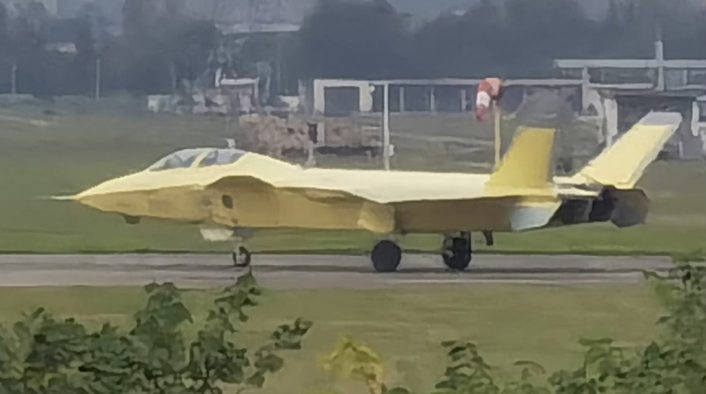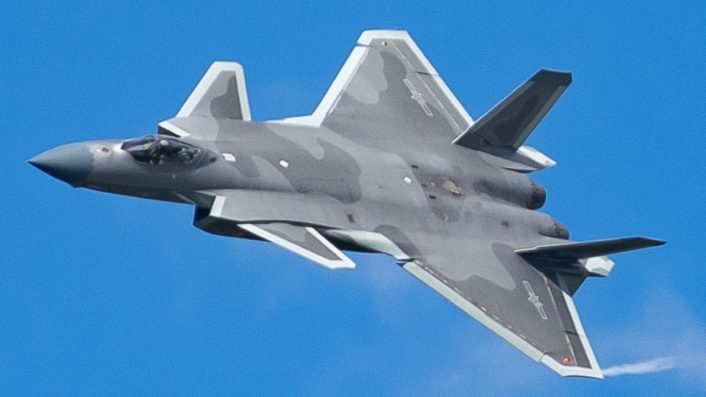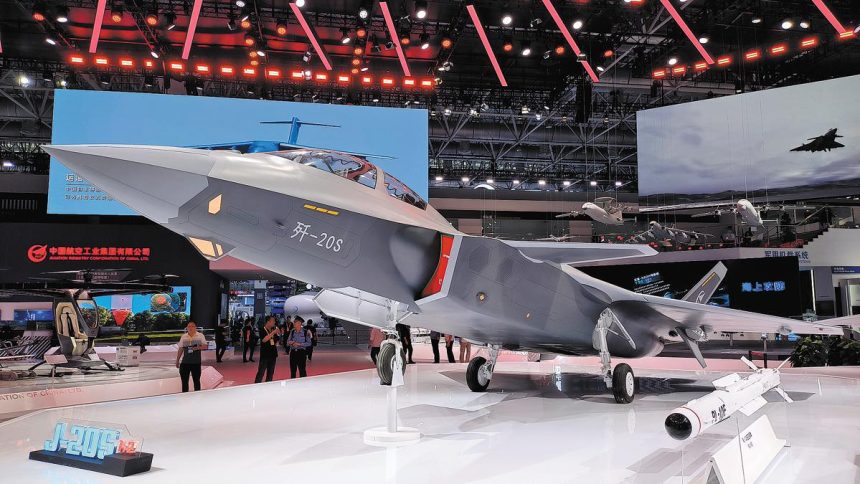After it first broke cover in 2021, the J-20S two-seat stealth fighter jet’s existence has now been officially confirmed and a scale model has also been put on display at the China International Aviation and Aerospace Exhibition.
Zhuhai Airshow 2024 is quickly becoming one of the most interesting editions of the event in the last few years. In fact, yet another aircraft has been officially unveiled after a long wait: the J-20S, the world’s first two-seat stealth fighter.
This aircraft is not really a novelty, as it first broke cover in late 2021 when it was spotted taxiing in primer paint at Chengdu Aerospace Corporation plant. The one displayed at the China International Aviation and Aerospace Exhibition in Zhuhai, however, is a scale model.
AVIC:
“J-20S Tandem Seater has Outstanding Situational Awareness, Electronic Jamming & Tactical Command n Control Capabilities”
“It also has Combat Coordination Capabilities for Manned/Unmanned Aircraft” pic.twitter.com/540002kVIr
— David Wang (@Nickatgreat1220) November 10, 2024
The unveiling of the J-20S
The unveiling of the aircraft at Zhuhai was announced by the Ministry of National Defense of the People’s Republic of China, mentioning that the aircraft’s existence has now been unclassified. According to Wu Jiwei, a spokesman for Aviation Industry Corp of China, the J-20S is a heavy-duty radar-evading fighter jet with long-range operation and multifunction capabilities.
“The new jet is characterized by its supreme ability to seize superiority in air combat, carry out precision strikes against land and sea targets, and perform battlefield situational awareness, electronic jamming and tactical command and control operations,” said the spokesman. He also added that, “in addition to conventional tasks, the J-20S can team up with unmanned planes in air combat.”
歼-20S作为全球唯一一款双座隐身战斗机,它的出现更大的意义是中国在先进战机方面的发展,已经从追赶变成了创新! pic.twitter.com/qFmKm4cN23
— DS北风(风哥) (@WenJian0922) November 10, 2024
“According to an introduction from the AVIC, the J-20S has good situational awareness capability, and that means it can act as a small-sized early-warning platform,” added Song Zhongping, a military affairs commentator mentioned in the press release. “The new model can also guide drones to carry out strikes against targets. All these new functions promise longer detection and fighting range.”
The press release mentions that the baseline J-20, upon which the J-20S is based, first flew in Jan. 2011 and was officially declassified in Nov. 2016 at the Zhuhai Airshow, shortly before being commissioned into service. The J-20S might follow a similar path, although there are only indications about the prototypes so far and none of them is in Zhuhai.

What we know about the J-20
The development of the J-20S has been first rumored in 2018, with the first sighting in Oct. 2021 coinciding with the taxi tests, followed by the first flight in the following month. A total of four prototypes have been reportedly built, with the last two spotted for the first time this year.
Wow 😲 … I totally missed, that after the three confirmed J-20S (J-20AS/J-20B ??) twin-seater – known are the numbers 2031, 2032 & 2033 – Huitong has updated his site with a fourth one numbered 2036!
And usually, there should be a no. 2035 too.
(Image via Huitong’s CMA-Blog) pic.twitter.com/mgjCH9FV1o
— @Rupprecht_A (@RupprechtDeino) November 8, 2024
Since the beginning, it was speculated that J-20S could be a multirole stealth fighter intended for ground attack or Electronic Warfare (EW) missions. Interestingly, among the rumors was also the possibility to serve as an airborne command & control asset inside a larger formation of manned and unmanned aircraft, possibly working in some sort of Manned-Unmanned Teaming (MUM-T) concept.
Even now that it has been unveiled, few data are available about the new aircraft, as it appears shrouded in secrecy and even Chinese military aviation researchers have little info about it. The aircraft are now believed to be undergoing testing at the Central Flight Test Establishment (CFTE).
Two-seat stealth fighter
The Ministry of National Defense highlighted that the J-20 is the third stealth fighter jet in the world to enter service, following the United States’ F-22 Raptor and F-35 Lightning II. However, these 5th generation aircraft exist only in the single-seat version.
Thus, when it first broke cover, the new two-seater J-20S variant became the world’s first two-seat stealth fighter. The J-20 is going to give China several interesting opportunities. The first and most obvious one is that they will have a dual seat version of their frontline fighter that can be used to train the pilots destined to the J-20 fleet.
歼-20四机编队飞行表演! pic.twitter.com/rqtHWRybOP
— DS北风(风哥) (@WenJian0922) November 10, 2024
What’s far more important, however, is that the additional crew member can perform tasks like operating some of the on-board sensors or managing a loyal wingman: the proliferation of displays and information coming from multiple sources clashes with the limited cognitive and processing capacity of a human being.
Another person on board would help avoiding pilot’s task saturation, applying more efficiently the crew resource management (CRM). Having only a single pilot to manage MUM-T operations, act as an airborne command & control post and perform an assigned mission set is simply unthinkable.
Moreover, in this case we are talking about a LO (Low Observable) aircraft expected to operate inside contested airspace, which would add even more workload to the crew. With a pilot in the front and a weapon systems officer (WSO) in the back the problem is quickly solved.

New air-to-air weapons
The J-20S model was displayed beside a model of the J-35A, and both were accompanied by full size mock-ups of the PL-10E and PL-15E air-to-air missiles. The latter is the most interesting in this case, as it has been optimized for carriage inside weapons bays.
看看PL-15E的折叠弹翼 pic.twitter.com/fGFj82zNpM
— DS北风(风哥) (@WenJian0922) November 10, 2024
In fact, the PL-15E ARH (active radar homing) missile, compared to the previous PL-15, has been equipped with folding rear fins, as well as narrowed forward fins. The rear fins are hinged to fold at mid-length, and then are deployed once the missile is launched.
The redesigned weapon, which was previously presented as an export variant of the standard PL-15, allows to increase the internal carriage capability of the J-20 to the current four missiles to six. According to some reports, the J-35 could have the same carriage capability.
The PL-15 is China’s standard ARH AAM, designed as a Chinese equivalent of the U.S. AIM-120D AMRAAM, and equipped with a two-way datalink and AESA (active electronically scanned array) seeker. It is being reported that the weapon is powered by a dual-pulse rocket motor that provides a range of around 150 miles.









